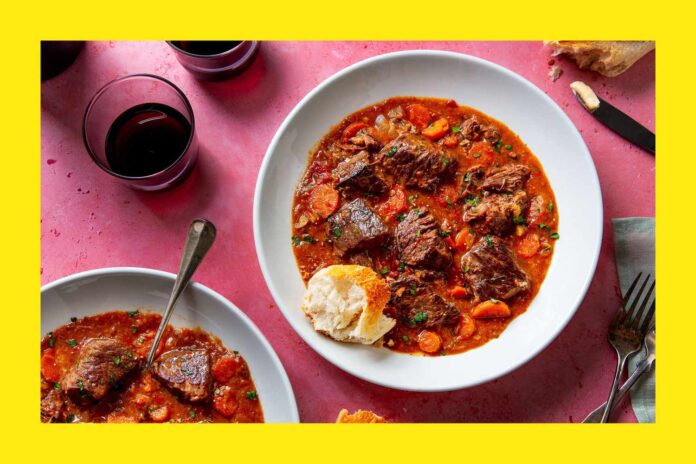:max_bytes(150000):strip_icc():format(jpeg)/What-is-a-slurry-FT-BLOG0624-82104b6dbc754b54a4436549009df67d.jpg)
There is more than one way to thicken sauces, soups, or stews, but one of the most dependable methods is a cornstarch slurry. This easy two-ingredient mixture helps to thicken everything from a rich poultry gravy to stir-fry sauces. Essentially the opposite of a roux, which involves cooking flour and fat at the start of cooking, a slurry is added toward the end of recipes, is uncooked, and doesn’t require any fat.
While a slurry can also be made with flour, a cornstarch slurry is a popular option since it is odorless and flavorless. As with flour, you’ll find that adding plain powdery cornstarch to a hot broth can cause small clumps to form, but the addition of a liquid like water yields a slurry that seamlessly integrates into any recipe and gives dishes a glossy finish. Here are our best tips for using this technique in your cooking.
What’s in cornstarch?
Let’s start with the basics. Cornstarch is a finely ground product that’s derived from the endosperm of the corn kernel. It’s generally used as a thickening agent in both sweet and savory applications including our Double Chocolate Pudding, a quick-cooking Chicken Fricassee Stir-Fry with Asparagus, and Classic Swiss Cheese Fondue. Don’t mistake it for corn flour, which is a finely ground corn product made from dried yellow corn.
We like cooking and baking with cornstarch because it’s colorless, flavorless, and odorless, therefore changing nothing about your dish except the viscosity. Other thickening agents such as cream, a buttery roux, or all-purpose flour act similarly to cornstarch but have a more prominent flavor that may impact the overall taste of your dish.
How to make a slurry with cornstarch
Making cornstarch slurry is a quick and easy process. In a small bowl, whisk together one tablespoon of cornstarch and two tablespoons of cold water, ensuring there are no lumps. (Adjust the consistency as needed; for a thicker slurry, you can opt for equal parts cornstarch to cold water.)
While your sauce or gravy is still cooking, add the slurry, starting with one tablespoon, and stir until it’s evenly incorporated. Continue to cook for an additional minute or two to let the dish thicken completely and get rid of any starchy, chalky taste from the cornstarch.
When cooking with cornstarch, keep in mind that a little goes a long way since it has twice the thickening power of flour. Add it in small increments so that you don’t end up overcorrecting the consistency of your dish.
Substitutes for cornstarch
Other ingredients such as arrowroot powder, rice flour, potato starch, tapioca starch, and xanthan gum can be used in place of cornstarch to make a slurry. You can also use all-purpose flour to make a slurry, though you’ll want to keep in mind that it has less thickening power and may affect the final flavor of your dish.



